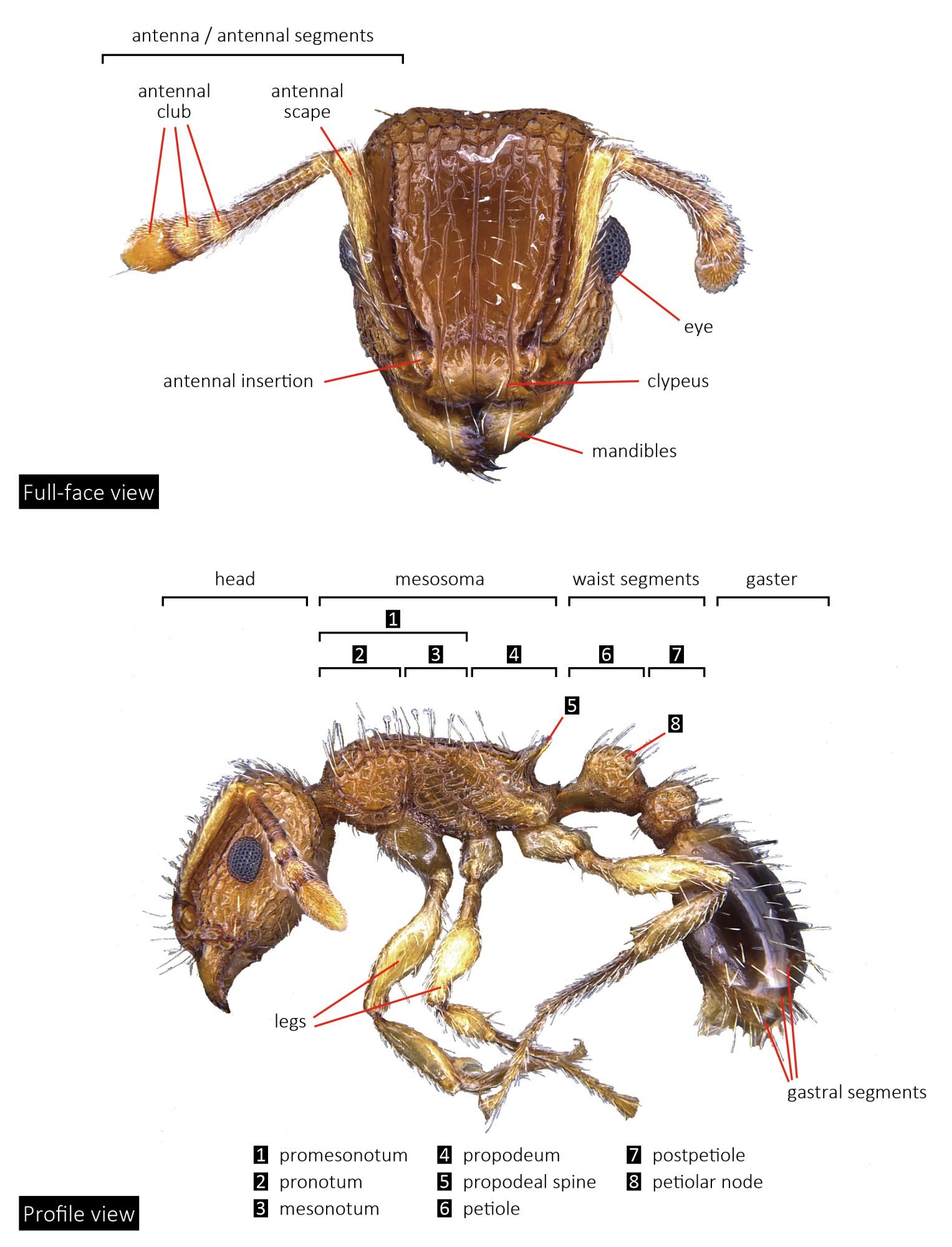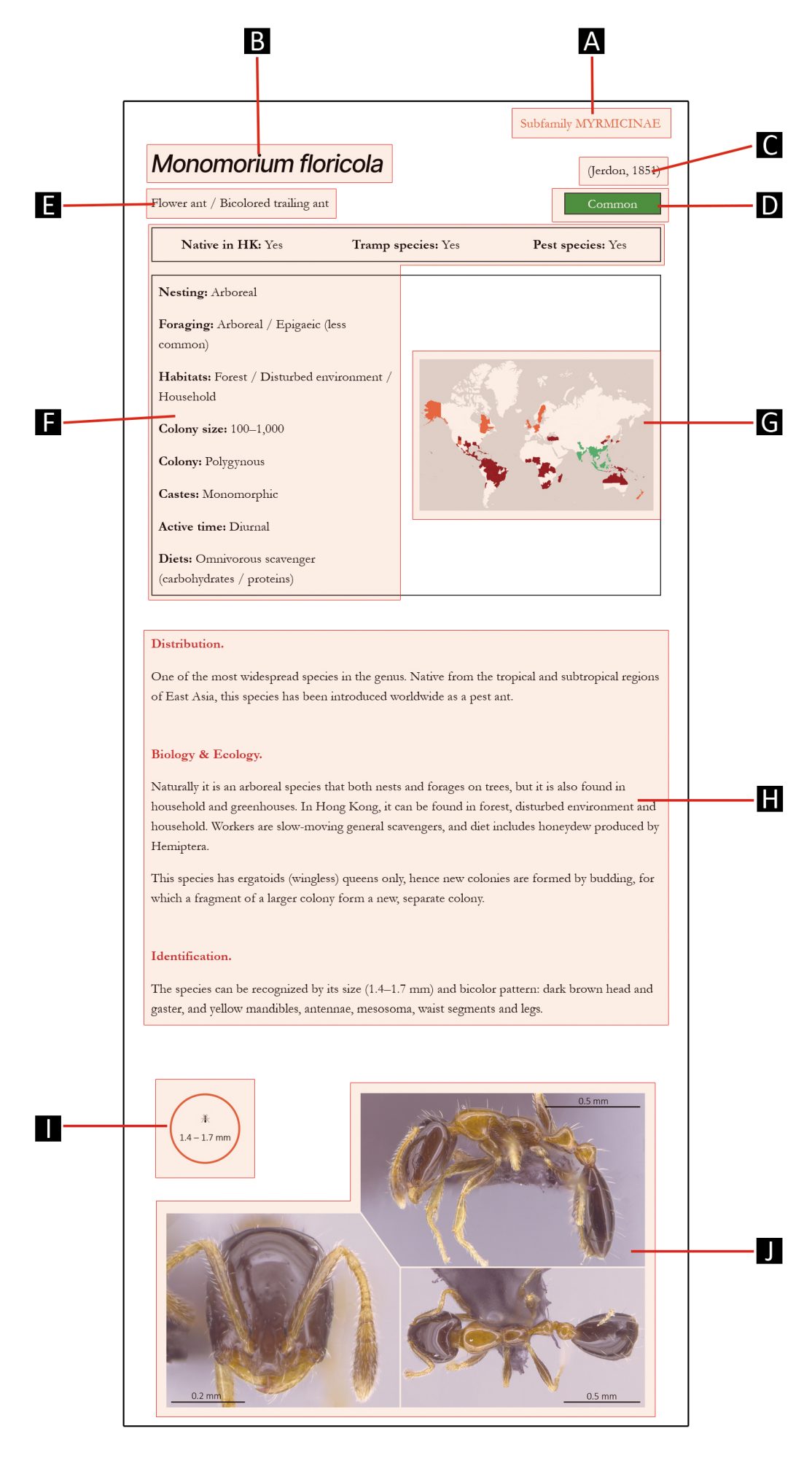
Subfamily FORMICINAE
GENUS
Gesomyrmex
Mayr, 1868
Distribution.
A small ant genus with 6 species described. The genus has a very limited distribution, restricted to tropical and subtropical regions of East Asia; although fossils from Europe are known.
Biology & Ecology.
Gesomyrmex species are considered strictly arboreal that both nest and forage on trees. Nests are small and contain a hundred to several hundreds of workers, forming monogynous colonies (one queen per colony).
Gesomyrmex species are most likely hunters and possibly scavengers. However, little about their foraging activity is known due to their arboreal lifestyle.
This genus is known for its exceptional level of caste polymorphism in terms of morphologies and sizes. Minor workers have a wasp-like head, queens and supersoldiers (supermajor workers) have an elongated, subrectangular head with powerful mandibles, while soldiers (major workers) situated in-between. Strong mandibles of queens & supersoldiers allow for them to chew into living tree branches to create an entrance tunnel. Minor workers are likely hunters, while supersoldiers stay inside the nest and guard the entrance. Caste polymorphism in this genus has led to challenging taxonomical works.
Identification.
Gesomyrmex species are small to medium in size (2–6 mm), with yellow to light brown coloration. Apart from the aforementioned characters, they can be recognized by their large, elongated eyes and antennal scape positioned below the level of the eyes.

Species in this genus




